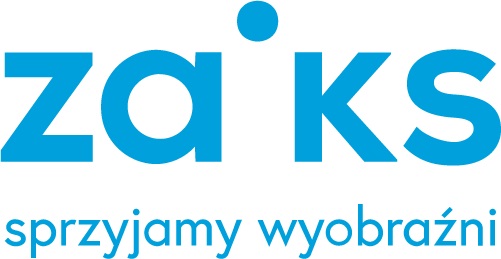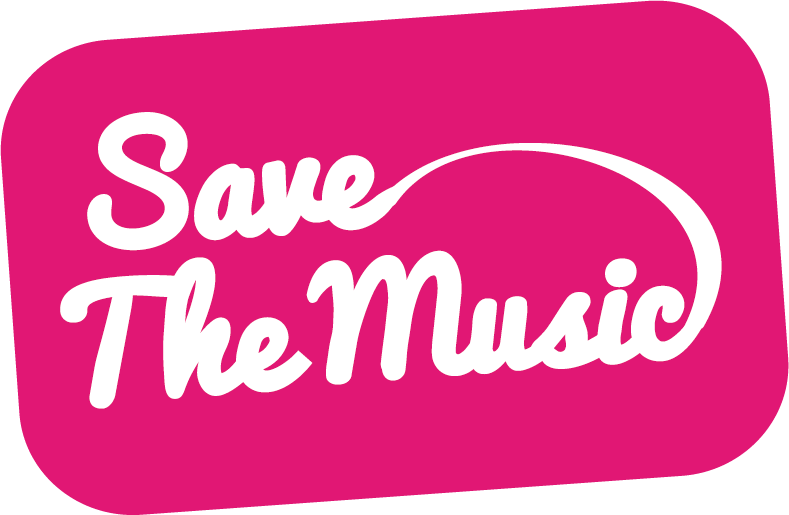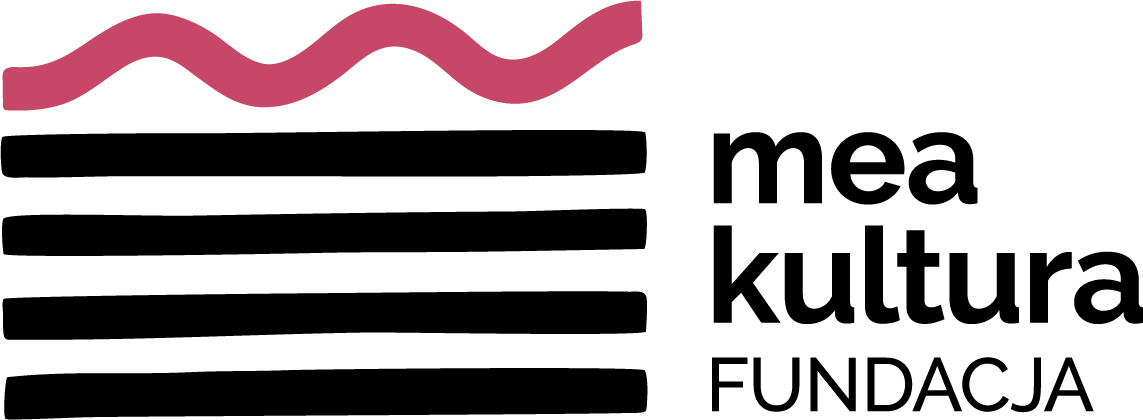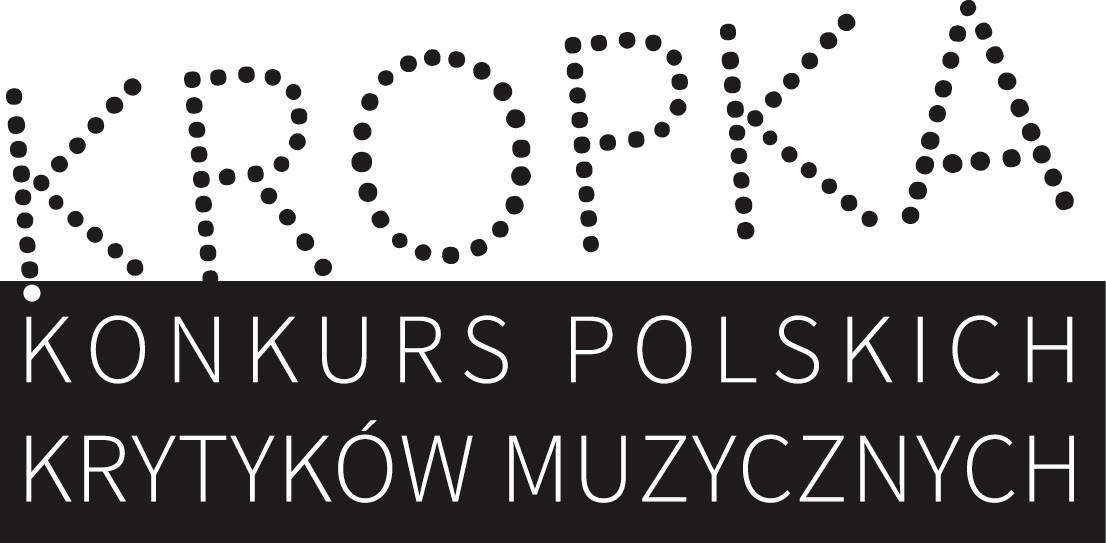The aim of this article is to interpret the musical aspect of Krzysztof Kieślowskiʼs famous movie The Double Life of Véronique. The director, whose works are filled with allusions to music and generally to art, always paid special attention to the sound of his films. The Double Life of Véronique, though not the last “fruit” of the cooperation between Kieślowski and Zbigniew Preisner, is the best illustration of this fact.
Kieślowski and “moral anxiety”
The mature works of Krzysztof Kieślowski (1941–1996) – one of the most famous and recognizable Polish directors, a leading figure in the Polish cinematic school of “moral anxiety” – allow us to consider him as an innovator and a developer of modern European art film[2]. In the 1980s, when he understood that cinematic truth is always tinted by the filmmakerʼs beliefs, he switched from documentaries to fiction movies[3]. He started to describe the inner world of the human being – memories, emotions, dreams and presentiments of the filmsʼ characters[4]. At the same time he admitted that this is an unattainable aim:
The goal is to reach that which exists inside the human being, but there are no ways to describe it. You can get closer to it, but you will never reach it. (…) Cinema cannot reach it becauseit has no means to do so. (Stok 1993, 114)[5].
This thematic and stylistic shift influenced the way of telling stories[6] centered around individual character, not around groups of any kind[7]. That fact is connected with Kieślowskiʼs declaration of a total lack of interest in Polish politics in the early 1990s[8]. According to Kaisa Hiltunen, in his mature works are also some references to the current historical situation, such as the end of Communism in “The Double Life of Véronique” and the unification of Europe in “Blue”. These references, however, are less essential for an understanding of these films than they would have been in the 1970s and 1980s (Hiltunen 2005, 15–16)[9].
Kieślowskiʼs late fiction films explore the idea that in some inexplicable ways we are linked with other people and the universe[10], that our existence consists of more than visible and rational things. Besides that, the themes of alternative lives, realities and decisions[11] are present in virtually all his late movies[12]. As Slavoj Žižek states:
Krzysztof Kieślowskiʼs obsession with the role of chance and of parallel alternate histories can be perceived as an endeavor to articulate this new life experience in all its ambiguity, one that links him to the more clearly “postmodern” directors of the past decade or two.
The most significant illustration of this phenomenon is of course The Double Life of Véronique (1991), in which Véronique gets another chance. She benefits from Weronikaʼs mistakes and learns to avoid things that caused her harm[13] (trusting her intuition which tells her what she should do, Véronique gives up singing)[14]. In that case repetition becomes a base for successful action. To take this point of view into consideration, we can say that this is a story of one and the same Véronique who travels back and forth in time[15].
Music as an emotional message
Kieślowski commonly cooperated with various personnel from very early stages of the filmmaking process. Virtually all his screenplays were co-written with Krzysztof Piesiewicz.
Kieślowski would usually employ his cinematographer and producer in a creative or advisory role to the script from the very outset of a project. This integration also applied to the artistic contribution of Zbigniew Preisner (b. 1955) – a Polish leading film music composer.
His scores for the late films of Kieślowski, particularly The Decalogue, The Double Life of Véronique and The Three Colours trilogy, have brought him international acclaim. According to Roger Hickmanʼs classification, we can describe the style of his music as „postromantic” (Hickman 2006, 39). He emphasizes the importance of melody and traditional harmony in his pieces[16]. Another important feature of Preisnerʼs style is a kind of reverb which gives his music a “breathing” quality (Carisson & Holm 1997, 39) but also resembles resonance usually associated with religious buildings. It consequently helps to assert the mysterious undertones of both the musical themes and the subject matter itself. All these tricks help creating a very emotional atmosphere, idiomatic for Preisnerʼs works and corresponding with the composerʼs point of view:
I think that we shouldn’t be embarrassed about our feelings. And I think that feelings are the only important thing that we possess (…). And I don’t want to be ashamed of it, though I’m not an “open person” (…).
What is interesting in the Preisnerʼs style is a fact that we cannot classify his music as classical or film music strictly[17]:
I think the whole success of my music started with the music for Kieślowski’s films. This music was on the border-line. It wasn’t classical music, but at the same time it wasn’t film music, in the precise meaning of the word. I make creations, I make creative music. That’s why I assumed I’d like the music I want to make now to be somewhere in-between. (my stress A. A.)[18]
In The Double Life of Véronique, one of the most musical Kieślowskiʼs films, sound is a part of the dramaturgy and theme.
Both heroines are connected with this field of art: Weronika is a singer, Véronique teaches music. Music in this particular example is more than an ornament – it is related to deeper meaning and subjective realities. One of its tasks is to create associations and narrative coherence by using leitmotivs[19].
It might even be argued that music, which has existential rather than an aesthetic value, contributes to making The Double Life of Véronique more universal. The film score also heightens the ambiguity of this movie (on both levels, the story and the visual appearance) – as we know, music is a semantically less precise medium than words and everybody can understand it in a different way. This is a typical Preisnerʼs manner to use music as a comment for complex scenes, in which protagonists are unable to put their undefined emotions or emotional states into words (according to the rule: “If you donʼt have anything to say, sing it”)[20]. Kieślowski claims that the marriage of music and image creates a new value:
You can describe something (…) which doesnʼt exist in the picture alone or the music alone. Combining the two, a certain meaning, a certain value, something which determines a certain atmosphere, suddenly begins to exist. (Stok 1993, 179).
Rainy music
During the first scene after prologue we can hear a very cheerful and idyllic choral song (Tu viendras). At the beginning we do not know where is the source of sound because music accompanies head titles (non-diegetic music). Despite this fact, we do not have problems in feeling a positive energy and a pastoral (or even folk) character of this theme. The celestial atmosphere is multiplied by using high scale register of womenʼs voices. The rhythmic element is characterized by strong pulse and regular (triple) meter.
In the second part of first scene we can witness Weronika’s singing this specific song with the other members of choir (diegetic music). At the same time when we recognize the music source, we get surrounded by the heroineʼs voice only. A choral song changes into a solo song performed by Weronika. This cheerful music is a symbol of her optimistic life attitude and serenity. The lively and homogeneous rhythm illustrates her spirited temperament. Also the lyrics expresses positive values: hope (One hot and sizzling day you will come…), happiness, admiration for nature (flowers, sun, grass, honey). What is characteristic, when it starts to rain (realistic sound) in the middle of a choir performance and the other choristers take shelter, she remains standing in the rain, her face raises towards the sky[21]. At the end of the song she clings to the closing note with exultation. We can treat this moving image as a metaphor of Weronikaʼs artistic determination.
In that scene a move from non-diegetic (choir) to diegetic music (soloist) perhaps suggests that film is an attempt of understanding an individual character and his or her uniqueness (a main tune in high register), not a group of people. At the same time this is a manifestation of Kieślowskiʼs artistic way (from documentaries to mature fiction films).
Swan song
The fateful performance is a central scene in The Double Life of Véronique. We can listen to a beautiful Concerto in e minor by Van den Budenmayer, a fictitious Dutch composer, an alter ego of Zbigniew Preisner (diegetic music)[22].
The main theme of this piece is a kind of leimotif, repeated throughout the film many times. The tune indicates a mysterious connection between two women (or rather between the two “lives” of one woman). According to Kieślowski, lyrics (an excerpt from Danteʼs Paradise) acts a secondary role only.
The most important is musical sound and usage of voices. The theme is introduced by the oboe[23] and than imitated by Weronikaʼs voice. The style of music is postromantic (full orchestra, melody-dominated texture). The significant fact is that Preisner is using sound of bells and the minor mode ̶ there are omens of an imminent death. The another characteristic aspect of this music is a dialogical texture ̶ we can hear a kind of imitation between Weronikaʼs voice and the oboe part[24]. A combination of full orchestra sound (bells, choir) and a sparse score results in the monumental character of this music.
In the middle of her performance Weronika starts to stagger and her singing goes out of key. The camera simulates her dizziness (we see the world through the dying Weronikaʼs eyes). When she finally falls down, the camera makes a spinning movement and we hear a thump (diegetic sound). This is followed by an elliptic cut to Weronikaʼs funeral. The patter of falling sand is transformed into a faint murmuring sound.
When she dies in Kraków, Kieślowski switches from a shot of her “spirit” staring up at mourners tossing dirt onto the casket to the French Véronique having sex with her boyfriend. This gradual shift (audio dissolve), which includes an aural bridge, implies that a part of Weronika continues to live in Véronique. The love scene is filmed through some transparent object which distorts the view[25]. There is a heavy sound of breathing yet other noises are faint, which suggests that we are hearing with Véroniqueʼs ears (meta-diegetic sound). After the lovemaking the image normalizes and the heroine says that she is feeling sad. At the same time we hear the leitmotif from the Van den Budenmayerʼs composition, referring to the source of this sadness (non-diegetic music).
In the puppet world
The puppet show during which Véronique meets Alexandre can be interpreted as an allegory of the relationship between the two girls. The puppet story is about a ballet dancer who dies (Weronika) and turns into a butterfly (Véronique)[26]. When the first part of the show is presented we can hear a very simple, piano music (diegetic music)[27]. The melodic figurations, tempo rubato and regular rhythm influence on the “trance” and mysterious nature of this piece. We can interpret this composition as a metaphor of fate determination.
In the second part of the show, when a dancer “reborn” like a butterfly from its chrysalis and when Véronique meets the puppeteerʼs gaze in a mirror, we hear the main tune again. The music is a reflection of heroineʼs thoughts and emotions (meta-diegetic music). It breaks at the same point as the concert. We can treat this scene as a symbol of spiritual and physical rebirth.
The path towards mysticism
Kieślowski asks a lot of existential questions in his films: How far are we in control of our lives? To whom are we responsible for our actions? How should we live our lives? As we can imagine, he does not respond directly. The Polish director adopted a strategy where arguments and opinions, instead of being discussed explicitly, are conveyed through the organization of the material and where the conclusions are left to the spectator. He preferred not to spell everything out. In his mature works the protagonistsʼ goals are not verbalized, or if something is said it expresses nothing but hesitation.
In Kieślowskiʼs late films music substitutes words. It is a symbolic form which can sometimes be shared by people who have no common verbal language. Music exceeds sociocultural boundaries and makes the various interpretations more complete. I suppose that this is a secret of Kieślowskiʼs art that led to his undying popularity. There are many evidences that his films, including The Double Life of Véronique, changed and are still changing people’s lives:
Then there was this girl in Paris. After one occasion a 15-year-old girl came up to me and said she had seen The Double Life of Véronique. She had seen it once, twice, three times, and she really wanted to say only one thing – that she had understood that the soul exists. (…) There was something very beautiful about this. The Double Life of Véronique was worth making for this girlʼs sake alone. (Stok 1993, 244).
Sources:
[1] A modified version of this article was published in Polish in 2015 in a journal “Przestrzenie Teorii”.
[2] Kieślowski was an auteur who left his mark on film history. At the same time, traces of earlier directorsʼ work can be seen in his movies. Kaisa Hiltunen (Hiltunen 2005, 180) notices similarities between Kieślowskiʼs and Antonioniʼs, Bergmanʼs, Tarkovskyʼs, Eric Rohmerʼs filmmaking. She also suggests that The Double Life of Véronique and The Three Colours trilogy might be said to represent pan-European cinema (my stress A. A.).
[3] After 1980 he only made one documentary film.
[4] Kieślowski compared his work to the physical analysis: “Physicists are starting to look for the relationship between microscopic elements to try and explain lifeʼs mysteries. Perhaps in my films Iʼm trying to do the same” (Mensonge 1994, 28).
[5] Or – as he commented elsewhere – “this story deals with things you can’t name. If you do, they seem trivial and stupid” (Romney, “The Double Life of Véronique”: Through the Looking Glass).
[6] We can notice that Kieślowskiʼs films are based on ideas rather than on stories in the traditional sense of the word.
[7] Despite that fact “there is a strong stylistic and thematic continuum running from the early documentaries to the late fictions, making it impossible to draw a clear-cut distinction between an early and a late phase” (Hiltunen 2005, 9).
[8] Significantly, in The Double Life of Véronique, when a demonstration takes place in a Kraków square, Weronika, sunk in her own thoughts, walks in the opposite direction from the crowd. She lives in her personal time and to her personal rhythm, unaware of the changes occuring around her.
[9] According to Margarete Wach, The Double Life of Véronique can be read as an allegory of the relations between the East (Poland) and the West (France). But if we take into account Kieślowskiʼs statements (like that one: The Double Life of Véronique “is a film about emotions and nothing else”, Stok 1993, 218), this interpretation does not seem convincing.
[10] In The Double Life of Véronique both heroines, Weronika and Véronique, feel that they are “not alone in the world”.
[11] Slavoj Žižek says in that context about the “parallel universes” or “alternative possible worlds” scenarios (Žižek, “The Double Life of Véronique”: The Forced Choice of Freedom).
[12] In Blind Chance Kieślowski gave his hero three alternative lives.
[13] There is an interpretation of Paul Coates (Coates 1985, 11–13), who refers to legends according to which one sees oneʼs double just before oneʼs death. Véronique did not see Weronika on the Cracow Market Square and was probably saved because of that. Also the figure of an old woman (whom Weronika sees under her window before the fateful performance) foreshadows Weronikaʼs imminent death.
[14] Kieślowski used reflecting and transparent surfaces, optical instruments (the small transparent ball) and different kinds of lenses (spectacles, contact lenses, magnifying glasses, camera lenses) as the central visual motives in that film. They are already present in the prologue. The Polish director often emphasizes the closed narrative structure by anticipating the outcome in the beginning.
[15] The fact that the title includes Véroniqueʼs name only is also significant.
[16] But this technical austerity should not be connected with the tendency of music to emphasize what is already apparent on other filmic media. “If the music [tells] the audience what is already visible, there is no use listening to it”, as Preisner concludes (Carrison & Holm 1997, 42).
[17] Preisner himself describes this genre as “music for non-existing movie”.
[18] This musical ambiguity can be treated as a reflection of blurred distinctions between the inner / the outer, the self / the other, the visible / the invisible and the real / the unreal, typical for Kieślowskiʼs movies.
[19] Music is an important means of establishing parallels between Weronikaʼs and Véroniqueʼs life. The same tune (composed by a fictitious Dutch composer, Van den Budenmeyer) is repeated throughout the film in different versions.
[20] Kaisa Hiltunen calls The Double Life of Véronique and The Three Colours trilogy “visual symphonies” (Hiltunen 2005, 112).
[21] Jonathan Romney notices that “this shot defines Weronika both as a spiritual being and as a woman susceptible to earthly ecstasy…” (Romney, “The Double Life of Véronique”: Through the Looking Glass). This fluctuation between sensuous and spiritual levels of life is typical for both heroines.
[22] This motive is first introduced in Decalogue IX. The figure of Weronika was also inspired by a minor character in Decalogue IX, a young singer with a heart condition.
[23] The oboe can be treated as a reminiscence of the flute, which is connected with Weronikaʼs as well as Véroniqueʼs theme.
[24] The oboe tune is also used as a counterpoint to the voice so we can interpret this music as a “fight” between Weronika and her alter ego.
[25] The distortions of the image might be interpreted as a visualisation of the process through which Weronika becomes a part of Véronique.
[26] The story may also prompt the spectator to ask whether all the events were just a fable invented by Alexandre. The puppeteer seems to be a messanger between two women, who knows the whole story very well. We can also treat Alexandre as “the hidden hand of Destiny” which controls the actions and motivations of his gorgeous subjects
[27]. In that case we do not know the music source but we can suppose that it is a kind of accompaniment.
Sources:
[1] A modified version of this article was published in Polish in 2015 in a journal “Przestrzenie Teorii”.
[2] Kieślowski was an auteur who left his mark on film history. At the same time, traces of earlier directorsʼ work can be seen in his movies. Kaisa Hiltunen (Hiltunen 2005, 180) notices similarities between Kieślowskiʼs and Antonioniʼs, Bergmanʼs, Tarkovskyʼs, Eric Rohmerʼs filmmaking. She also suggests that The Double Life of Véronique and The Three Colours trilogy might be said to represent pan-European cinema (my stress A. A.).
[3] After 1980 he only made one documentary film.
[4] Kieślowski compared his work to the physical analysis: “Physicists are starting to look for the relationship between microscopic elements to try and explain lifeʼs mysteries. Perhaps in my films Iʼm trying to do the same” (Mensonge 1994, 28).
[5] Or – as he commented elsewhere – “this story deals with things you can’t name. If you do, they seem trivial and stupid” (Romney, “The Double Life of Véronique”: Through the Looking Glass).
[6] We can notice that Kieślowskiʼs films are based on ideas rather than on stories in the traditional sense of the word.
[7] Despite that fact “there is a strong stylistic and thematic continuum running from the early documentaries to the late fictions, making it impossible to draw a clear-cut distinction between an early and a late phase” (Hiltunen 2005, 9).
[8] Significantly, in The Double Life of Véronique, when a demonstration takes place in a Kraków square, Weronika, sunk in her own thoughts, walks in the opposite direction from the crowd. She lives in her personal time and to her personal rhythm, unaware of the changes occuring around her.
[9] According to Margarete Wach, The Double Life of Véronique can be read as an allegory of the relations between the East (Poland) and the West (France). But if we take into account Kieślowskiʼs statements (like that one: The Double Life of Véronique “is a film about emotions and nothing else”, Stok 1993, 218), this interpretation does not seem convincing.
[10] In The Double Life of Véronique both heroines, Weronika and Véronique, feel that they are “not alone in the world”.
[11] Slavoj Žižek says in that context about the ˝parallel universes˝ or ˝alternative possible worlds˝ scenarios (Žižek, “The Double Life of Véronique”: The Forced Choice of Freedom).
[12] In Blind Chance Kieślowski gave his hero three alternative lives.
[13] There is an interpretation of Paul Coates (Coates 1985, 11–13), who refers to legends according to which one sees oneʼs double just before oneʼs death. Véronique did not see Weronika on the Cracow Market Square and was probably saved because of that. Also the figure of an old woman (whom Weronika sees under her window before the fateful performance) foreshadows Weronikaʼs imminent death.
[14] Kieślowski used reflecting and transparent surfaces, optical instruments (the small transparent ball) and different kinds of lenses (spectacles, contact lenses, magnifying glasses, camera lenses) as the central visual motives in that film. They are already present in the prologue. The Polish director often emphasizes the closed narrative structure by anticipating the outcome in the beginning.
[15] The fact that the title includes Véroniqueʼs name only is also significant.
[16] But this technical austerity should not be connected with the tendency of music to emphasize what is already apparent on other filmic media. “If the music [tells] the audience what is already visible, there is no use listening to it”, as Preisner concludes (Carrison & Holm 1997, 42).
[17] Preisner himself describes this genre as “music for non-existing movie”.
[18] This musical ambiguity can be treated as a reflection of blurred distinctions between the inner / the outer, the self / the other, the visible / the invisible and the real / the unreal, typical for Kieślowskiʼs movies.
[19] Music is an important means of establishing parallels between Weronikaʼs and Véroniqueʼs life. The same tune (composed by a fictitious Dutch composer, Van den Budenmeyer) is repeated throughout the film in different versions.
[20] Kaisa Hiltunen calls The Double Life of Véronique and The Three Colours trilogy “visual symphonies” (Hiltunen 2005, 112).
[21] Jonathan Romney notices that “this shot defines Weronika both as a spiritual being and as a woman susceptible to earthly ecstasy…” (Romney, “The Double Life of Véronique”: Through the Looking Glass). This fluctuation between sensuous and spiritual levels of life is typical for both heroines.
[22] This motive is first introduced in Decalogue IX. The figure of Weronika was also inspired by a minor character in Decalogue IX, a young singer with a heart condition.
[23] The oboe can be treated as a reminiscence of the flute, which is connected with Weronikaʼs as well as Véroniqueʼs theme.
[24] The oboe tune is also used as a counterpoint to the voice so we can interpret this music as a “fight” between Weronika and her alter ego.
[25] The distortions of the image might be interpreted as a visualisation of the process through which Weronika becomes a part of Véronique.
[26] The story may also prompt the spectator to ask whether all the events were just a fable invented by Alexandre. The puppeteer seems to be a messanger between two women, who knows the whole story very well. We can also treat Alexandre as “the hidden hand of Destiny” which controls the actions and motivations of his gorgeous subjects
[27]. In that case we do not know the music source but we can suppose that it is a kind of accompaniment.
Bibliography
- Carisson, M. and Holm, P., 1997, Interview with Zbigniew Preisner. In: Music from the Movies.
- Coates, Paul, 1985, The Story of the Lost Reflection. The Alienation of the Image in Western and Polish Cinema. London: Verso.
- Hickman, Roger, 2006, Reel Music, New York: Norton.
- Hiltunen, Kaisa, 2005, Images of Time, Thought and Emotions. Narration and the Spectatorʼs Experience in Krzysztof Kieślowskiʼs Late Fiction Films, Jyväskylä: Jyväskylä University Printing House.
- Mera, Miguel and David Burnand (ed.), 2006, European Film Music, Burlington: Ashgate Publishing Company.
- Ponti, Edoardo, Interview with Zbigniew Preisner, [accessed, 23.03.2022]
- Romney, Jonathan, The Double Life of Véronique: Through the Looking Glass, [accessed, 23.03.2022].
- Stok, Danuta (ed.), 1993, Kieślowski on Kieślowski, Helsinki: Like.
- Žižek, Slavoj, The Double Life of Véronique: The Forced Choice of Freedom, [accessed, 23.03.2022].
Partnerem Meakultura.pl jest Fundusz Popierania Twórczości Stowarzyszenia Autorów ZAiKS











